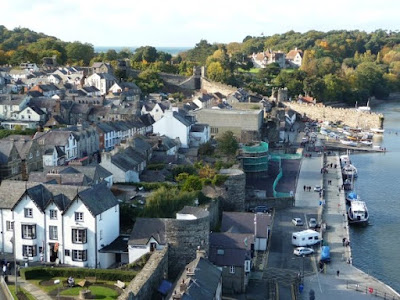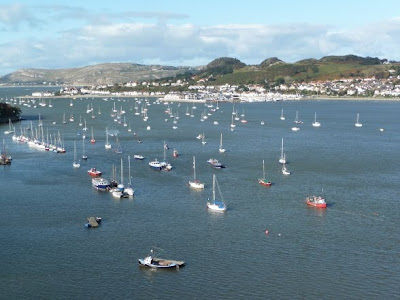The only problem with National Trust sites is that you can never do interior photography, and so I have no pix of the beautiful interior, decorated as it was in the 1930s and with Rex Whistler's wonderful dining room mural, 55 by 10 feet, an Italian harbor/country scene that invites study as well as appreciation. Whistler was, among other things, a theatrical scene designer and painter. He volunteered in 1940, at the age of 41, and was killed at Normandy in 1944. The other thing you get no hint of, from the outside, was that the marquess/earl in the early 19th century, the 2nd earl of Uxbridge, was one of the heroes of Waterloo, Wellington's cavalry chief, who lost his leg in the battle, at Wellington's side. He went on to considerable greatness as a public servant in subsequent years. The House contains quite a Waterloo museum.
The gardens, even in mid-October, were stunning too.
 |
A pair of dolmens, possibly contrived folly, sits near the stables
|
 |
Trees lining the path to the entry view
|
 |
The House; heather and other things still in bloom all about
|
 |
View of House from Menai Strait side; the House is perhaps 75 yards up from
the Straits; wall foliage has turned red |
 |
Part of the gardens
|
 |
Some of the trees here think it's autumn
|
 |
The hydrangeas haven't gotten the memo yet
|












































